The undeniable majestic beauty of a long-haired dog makes these breeds highly sought-after, and the fact that they don’t shed much makes them even more appealing to invite home.
So, which dog breeds are both long-haired and low-shedding?
Here’s the list:
- Spanish Water Dog
- Silky Terrier
- Yorkshire Terrier
- Papillon
- Shih-Tzu
- Afghan Hound
- Lhasa Apso
- Briard Dog
All dogs shed, but due to the hair length and often the coat texture of the canines on this list, these four-legged friends keep the shedding to a minimum. Read on for more information on these dogs, including what to expect when it comes to grooming.
1. Spanish Water Dog

- Shedding Level: 1/5 (very low)
- Grooming Effort: 5/5 (very high)
Starting this list of long-haired dogs that don’t shed heavily is the Spanish Water Dog or SWD.
This sheepdog from Spain doesn’t exactly have an average coat. Instead, its fur is corded. In other words, the SWD is covered in long dreadlocks that contribute to its scruffy but cute appearance.
The cords are great at entrapping loose hair, so the Spanish Water Dog doesn’t shed much.
That this dog is single-coated also lends the SWD its low-shedding nature.
Allow me to explain for a moment why this is important in how much or little your dog will shed.
A single-coated dog doesn’t have an insulating undercoat that changes in the summer and winter. You’ll skip the twice-annual periods of heavy shedding that can last for weeks at a time.
If you guessed that the Spanish Water Dog’s dreadlocks would be difficult to groom, you’re absolutely right. You’ll have to inspect your SWD regularly for mats and then pull out any by hand.
If you try to use your favorite comb, all you’ll probably do is yank on the dog’s cords and pull all the way to his skin. Ouch!
At least once per year, you’ll have to trim back the length of the dreadlocks using a #5 or #5F skip-tooth blade. Be sure to cut no more than a quarter-inch of the SWD’s fur and keep the length uniform.
Recommended: Go here to see our top-rated dog hair blow dryers
2. Silky Terrier

- Shedding Level: 2/5 (low)
- Grooming Effort: 4/5 (high)
On the complete opposite end of the dog breed spectrum regarding size and coat texture is the Silky Terrier. This Australian-bred dog is spirited, bright, and alert. Surprisingly, for a small and elegant pup, the Silky Terrier is more than a lap dog; but was once a hunter as well!
If you own a Silky, you won’t have to worry about your dog shedding much. That long, smooth, silken hair is only single-layered.
The length of the Silky Terrier’s coat also does her many favors in reducing shedding.
You see, dogs grow fur across four stages. These stages include an active growing phase, a transitional phase, a rest phase, and then a shedding phase.
When a dog has longer hair, the duration of each phase is prolonged. That means it takes longer to get to the last phase when a dog like the Silky Terrier would shed. This is what allows long-coated dogs to release less hair, especially compared to shorter-furred breeds.
What about grooming? Well, due to the enviable length of her locks, you’ll need to go through her coat with a pin brush regularly. As you brush, look for mats, tangles, and knots.
Some dog owners opt for keeping their Silky Terrier’s coat short and scruffy, which can make grooming easier, but the coat can lose some of its gloss and shine. So it’s a tradeoff.
3. Yorkshire Terrier

- Shedding Level: 2/5 (low)
- Grooming Effort: 4/5 (high)
In much the same vein as the Silky Terrier is the Yorkshire Terrier. This dog also has gorgeous, flowing locks that turn heads!
Once a ratter, the English dog nicknamed the Yorkie is a lap dog today and quite a good one at that.
In terms of shedding, Yorkies aren’t the lowest-shedding small dog, but they’re up there for sure.
The same reasons why the Silky Terrier is so low-shedding apply to the Yorkie as well. (i.e., the Yorkie is single-coated and grows very long fur).
The American Kennel Club listed the Yorkie as one of its most hypoallergenic dogs, but that simply means that having a Yorkie in the house would reduce instances of allergies. No dog can eliminate dander allergies entirely, even the adorable Yorkie.
So what’s grooming a Yorkie like?
The answer is not all too different from a Silky Terrier. You’ll have to commit to daily brushing with a wide-toothed metal comb to prevent debris from accumulating in your Yorkie’s long coat.
Regular brushing also allows you to catch knots and mats before they become extremely painful for your dog.
That said, should you decide that the Yorkie’s daily grooming routine is a little too tough to keep up with, you can always trim your dog’s coat, so it’s shorter.
The Yorkie might lose some of its elegance with a puppy cut, but it’s also that much cuter.
Bathing your Yorkie is another important part of its care routine. It’s best to bathe your dog every week to every two weeks, depending on how dirty and stinky she is.
Always use dog-friendly shampoo to avoid dryness and irritation that can worsen shedding. Let your Yorkie air-dry, as towel-drying will rough up her long fur and cause tangles and mats.
Recommended: Go here to see our top-rated dog hair blow dryers
4. Papillon

- Shedding Level: 2/5 (low)
- Grooming Effort: 2/5 (low)
The French dog named after the butterfly ears it proudly exhibits, the Papillon was always a companion dog. Today, the Pap is still highly favored for that role.
You won’t have to worry about much shedding from the Papillon. I would liken its rate of shedding to the dog I’m going to talk about next, which is the cutesy Shih-Tzu.
Papillons have a long, smooth, and single-layered coat, which is why this dog loses fur only minimally throughout the year.
If you’ve been waiting for a low-shedding, long-haired dog on this list that’s easy to groom, the Papillon could be just the canine for you.
As for grooming, you can get away with brushing the Pap at least once a week. I’d recommend twice a week if you can swing it, and be sure to use a slicker brush for the job.
As you brush your Papillon, you naturally moisturize its skin by spreading oils. You also catch the loose and dead hair before it falls out, which reduces shedding.
Your Pap’s coat will look irresistibly smooth and shiny too!
5. Shih-Tzu

- Shedding Level: 2/5 (low)
- Grooming Effort: 5/5 (very high)
The Shih-Tzu is a toy breed from China that’s always had an air of royalty to it. The dog is also a big seller because of how little the Shih-Tzu sheds.
Now, the Shih-Tzu is the first of the dogs on this list who is double-coated, but don’t worry. This sweet dog doesn’t blow its coat too ferociously because the Shih-Tzu just isn’t a very large dog.
At most, Shih-Tzus weigh 16 pounds and stand at 11 inches tall, so they don’t have a lot of surface area for shedding.
You’re likelier to see Shih-Tzus with a neat and trim puppy cut, which can also reduce how much this dog sheds.
If your Shih-Tzu has a longer, full-length coat, then you should know from prior sections what you could be in for. The dog will be prone to mats, knots, tangles, and debris getting stuck in its coat.
I would suggest daily brushing for a long-haired Shih-Tzu and every other day for one with a shorter, shaggier cut. Be sure to use a slicker brush or wire pin brush.
Shih-Tzus will stay clean with monthly baths. You can wait to bathe this cute dog every two months if yours doesn’t spend too much time outside.
6. Afghan Hound

- Shedding Level: 2/5 (low)
- Grooming Effort: 4/5 (high)
One of the most angelic dogs, without a doubt, is the Afghan Hound.
As a sighthound, the Afghan Hound is a renowned hunter, although most people keep the dog as a household companion these days. That’s a role that suits the Afghan Hound just fine.
What about this breed’s shedding?
Worry not, as the Afghan Hound is well and truly a low shedder.
The tall, sightly Afghan Hound is a single-coated canine that grows particularly long hair, and you know by now how those two factors work well together to create a low-shedding dog.
That said, the Afghan Hound has a very high-maintenance grooming routine, so you’ll have to be ready for that.
Every week and ideally several times throughout the week, you should use your grooming tools to detangle the Afghan Hound’s coat. Mats are another issue you have to frequently contend with.
Brushing through the smooth Afghan Hound’s coat isn’t difficult per se since it’s silken and soft, but the maintenance is time-consuming.
Another facet of this dog’s care is bathing. It’s best to plunk the Afghan Hound in the tub every week to keep her clean. An oatmeal-based, dog-friendly shampoo is less drying than other formulas and can prevent irritation.
7. Lhasa Apso

- Shedding Level: 1/5 (very low)
- Grooming Effort: 4/5 (high)
The mystical Lhasa Apso from Tibet grows extraordinarily long fur that sometimes covers its eyes.
A watchdog that still maintains its vigilant streak to this day, even with all that hair, the Lhasa Apso is super low-shedding. I would say this dog sheds less than many of the others on this list.
That may surprise you, but it’s true!
The Lhasa Apso is double-coated, though, so you will have to contend with its dense hair coming out a little more readily in the summer and the winter. But it’s nothing too noticeable, and the Lhasa Apso is a low shedder the rest of the year.
Have a pin brush handy for keeping the Lhasa Apso’s coat tidy. I would encourage you to brush your dog daily if you can make the time, but every other day should be okay.
That said, you will definitely want to comb through the Lhasa Apso’s coat on a daily basis when the dog is shedding seasonally. It’s a great way to control all that loose hair.
Set aside some time about once a week for getting deep into the Lhasa Apso’s multilayered coat to give it a thorough brushing. Clip portions of the hair back and go layer by layer to detangle and brush each portion. You can still use a pin brush for this job.
You can trim the Lhasa Apso, so it has a manageable puppy cut. However, it’s important not to trim the undercoat off as that can cause your dog problems. The undercoat is needed to help insulate the dog and protect them from the elements. For reference, the average length of the Lhasa Apso’s coat, when trimmed is about two inches.
8. Briard Dog

- Shedding Level: 1/5 (very low)
- Grooming Effort: 5/5 (very high)
Last but certainly not least on my list of long-haired dogs that don’t shed heavily is the Briard Dog, aka the Berger de Brie, a French Shepherd with a shaggy coat.
This herding dog is like the Lhasa Apso in that it’s incredibly low-shedding for its size.
Part of that has to do with its lengthy coat, which grows as long as six inches on average. The time between fur-growing stages benefits the Briard Dog greatly.
The wiry texture of this dog’s coat also makes him lower-shedding.
I must note that the Briard Dog is double-coated and will shed seasonally. Despite the dog’s size, which is nearly 30 inches tall, the Briard won’t shed to excess. It’s amazing!
To keep your Briard Dog’s coat contained, you want to groom your dog as early as you have him. This will establish a good routine that you two can follow for life.
Use a bristle brush to detangle both layers of the Briard Dog’s coat, and plan to brush him between twice and thrice weekly when your dog isn’t shedding seasonally.
Once the Briard Dog blows its coat, ramp up its brushing to every single day.
Bottom Line
Long-haired dogs naturally shed less than their shorter-furred counterparts due to the delay between hair growth stages. And many long-haired breeds are also single-coated, which is another advantage in the fur loss department.
That said, just because a breed isn’t supposed to shed much doesn’t mean it always happens that way. If your long-haired canine is shedding excessively and it’s not due to blowing its coat, it could be due to other reasons—for example, diet, fleas, stress, or a health issue.
So if you are concerned about your dog’s shedding, it may be best to contact your local veterinarian. You can also see our shedding guide for tips on getting it under control.
Anyways, thanks for reading!
And if you’d like to share your thoughts on any of these breeds or recommend another low-shedding beauty with long hair, drop us a comment below.
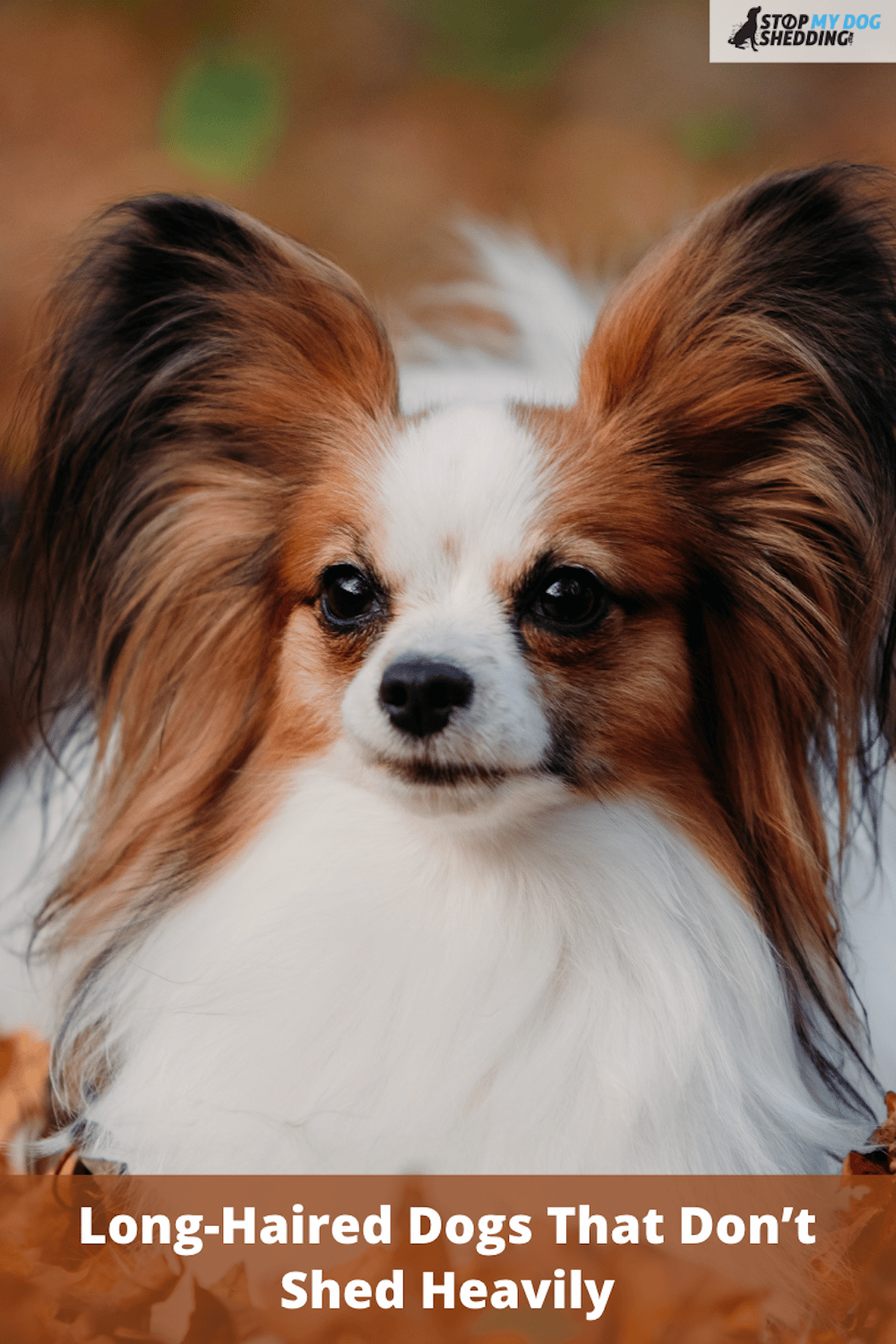

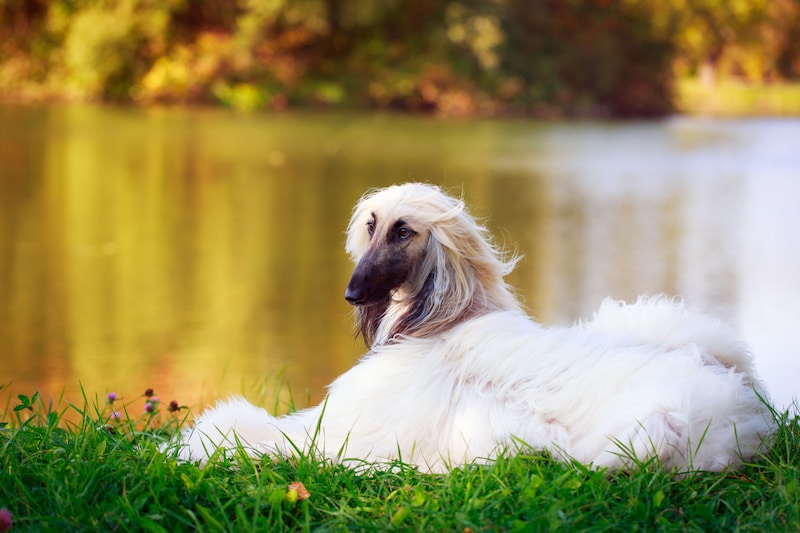
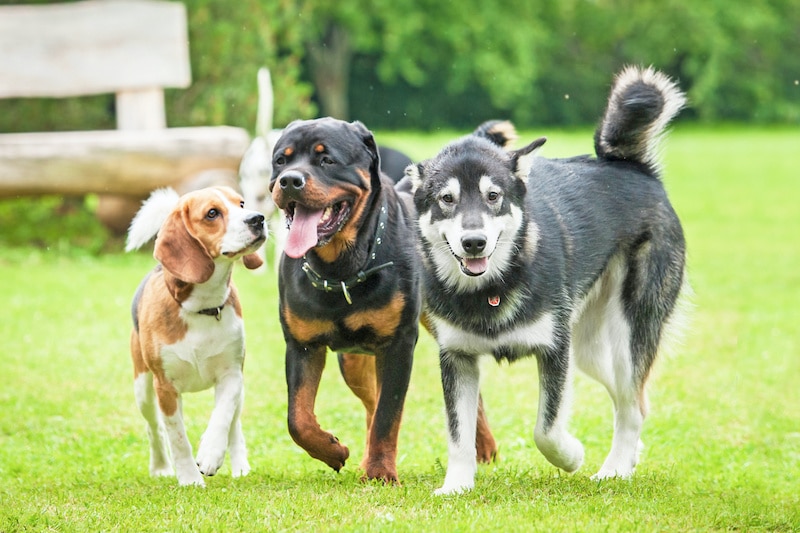
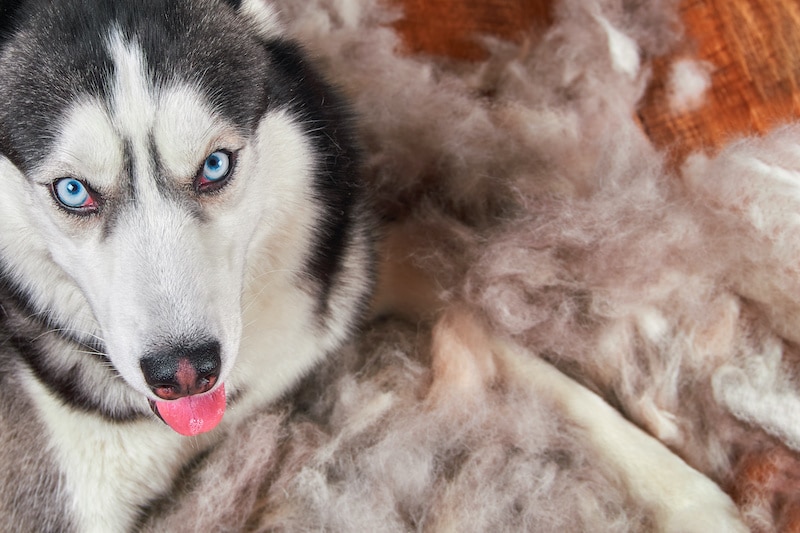
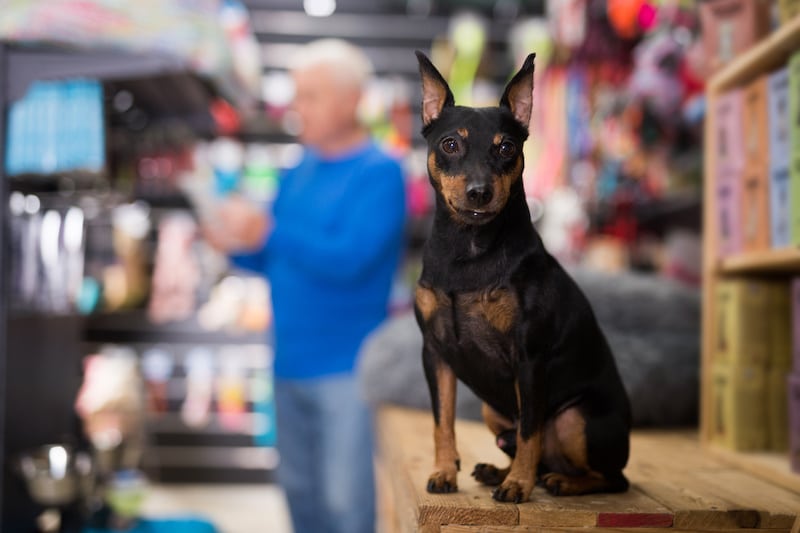







Please note: By submitting a comment using the above comment form, you confirm that you agree with the storage and handling of your data by this site as detailed in our Privacy Policy.